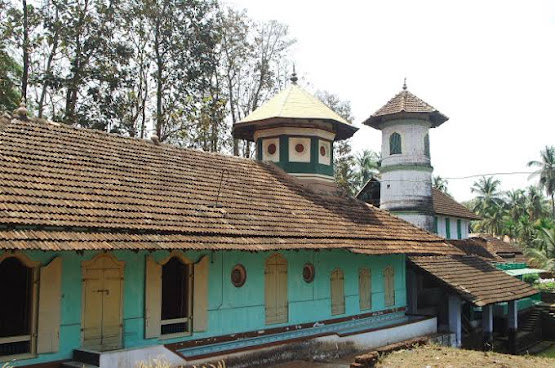The Kakkulangara Masjid: A Valapattanam heritage
The Valapattanam river now seems quite calm with massive banks on both sides but it was actually the capital of the Kolathiri kings of the Mooshika dynasty. The name Valapattanam comes from the word Balyapattanam which it was called in the old days as it was the largest town along the most important trade route. The place was a venue for communal harmony & the Kakkulangara Masjid on one side of the Valapattanam town has stood witness to changing times. Today the mosque is just a pin on a corner of the road with new mosques coming around but its stature in history is one for all to revere.
For any person who comes to the masjid there are two particular sights which stand out, the large minaret tower & a pond. It is believed that the masjid was constructed somewhere between the 8th & 9th century by a Kolathiri king who like Cheraman Perumal is said to have converted to Islam. In Kerala the spread of Islam is attributed to the arrival of Malik Deenar in Malabar who preached the way of Prophet among the people. His way of preaching led to many Kings embracing the faith & the Kolathiri King wanted to give his people a place to perform prayers. He is said to have asked the Chirakkal Raja to give this small piece of land to construct a mosque. The King needed masons who could construct the masjid & so is said to have asked the Arakkal family for assistance. The Kakkulangara mosque thus was constructed by the Arrakkal family on the land given by the Chirakkal Raja on the instructions of the Kolathiri King. The construction of the masjid is done in traditional Kerala architecture styles with Islamic elements adorning the interior & outer façade.
The masons & carpenters needed laterite stones & mud to construct the masjid but it was difficult to transport it from the river so a large pit was dug next to the masjid foundation. The masons realised that there was a spring in the limestone bedrock which filled the whole area with water. The water was sweet and it created a large pond, the Kolathiri Raja decided to build steps on all sides giving access to all to bathe. The pond earlier was within the precincts of the mosque but today one can access from all sides. There were walls built all around but today only a small portion of the old wall remains, also the bathing gate was built in later years. As per Islam, an aqueduct is built inside the mosque which collects water from an exterior source used by all to cleanse themselves before performing prayers. Unlike temples which have a temple pond, masjids do not usually have ponds & so Kakkulangara masjid is an exception for this rule. The pond even today is used for collecting water & it is also used to wash oneself before performing the prayers. The tall minaret tower one sees inside the compound is an important structure as it is considered to be the tallest in Malabar. The interior of the mosque is quite simple with a small prayer hall & narrow corridors. The earlier masons did not have a blueprint to construct large domes & only so could make only a small minaret dome which houses the copper conductor as seen on the thatched roof.
The origin of the mosque is quite difficult to ascertain due to non availability of written documents but it is to be known that the famous traveller Ibn Batuta came to this mosque in the 14th century. It is important to know that the Kakkulangara masjid finds a mention in his travelogues where he documents the origin by attributing the building of the mosque by the ancestors of the local king after embracing Islam. The mosque cemetery also has the tomb of Abubakr ibn Muhammad, grandson of the first Caliph Abu Bakr As-Siddiq. The mosque’s upkeep fell into the hands of the local community in later years & there was a period of neglect which resulted in many portions of the structure dilapidating.
Today the mosque is undergoing renovations with the help of the government to preserve the heritage. The story and architecture of the mosque is one for all to know & in many ways also allows the person to understand the heritage of Valapattanam.



.jpeg)
Comments
Post a Comment